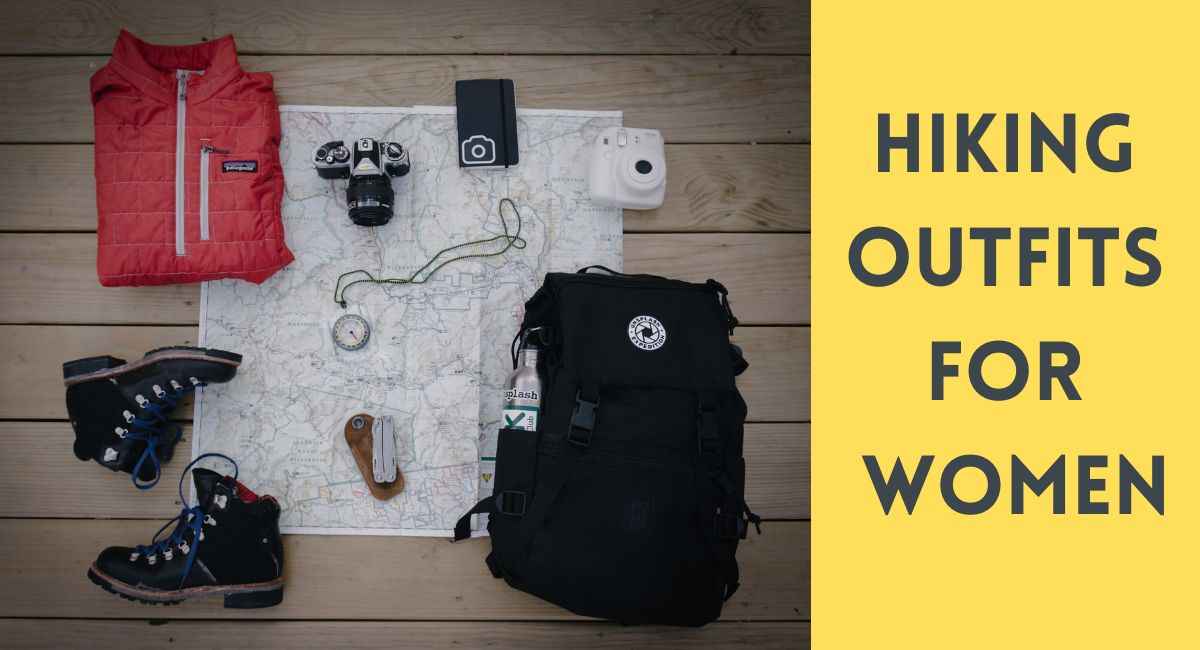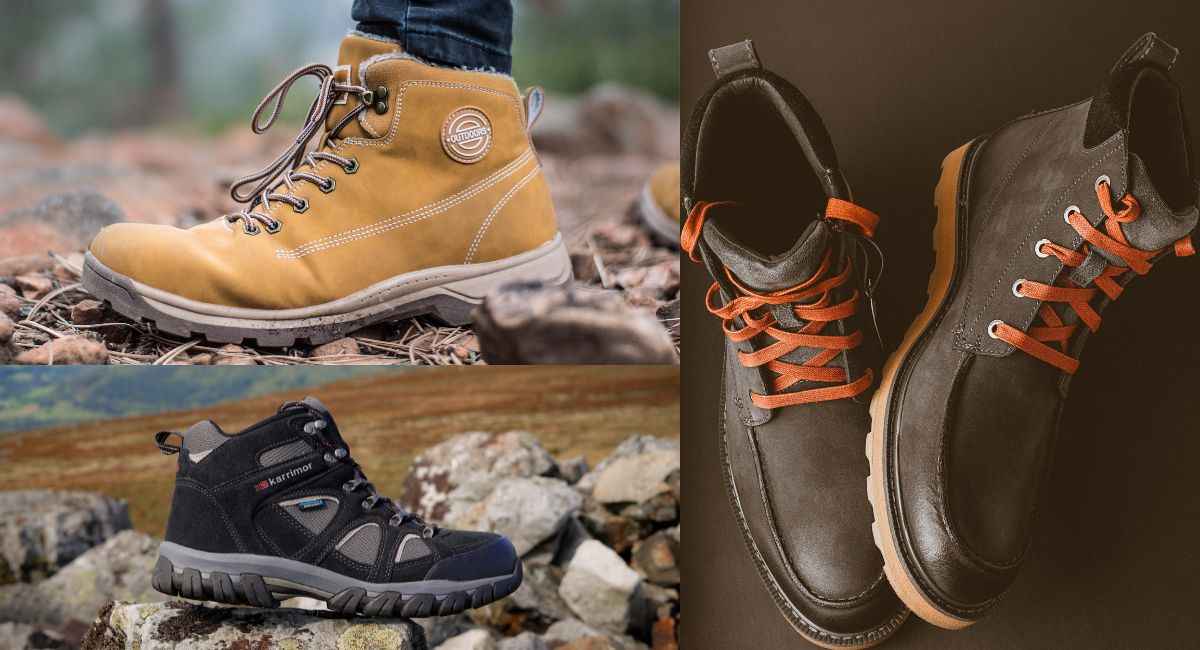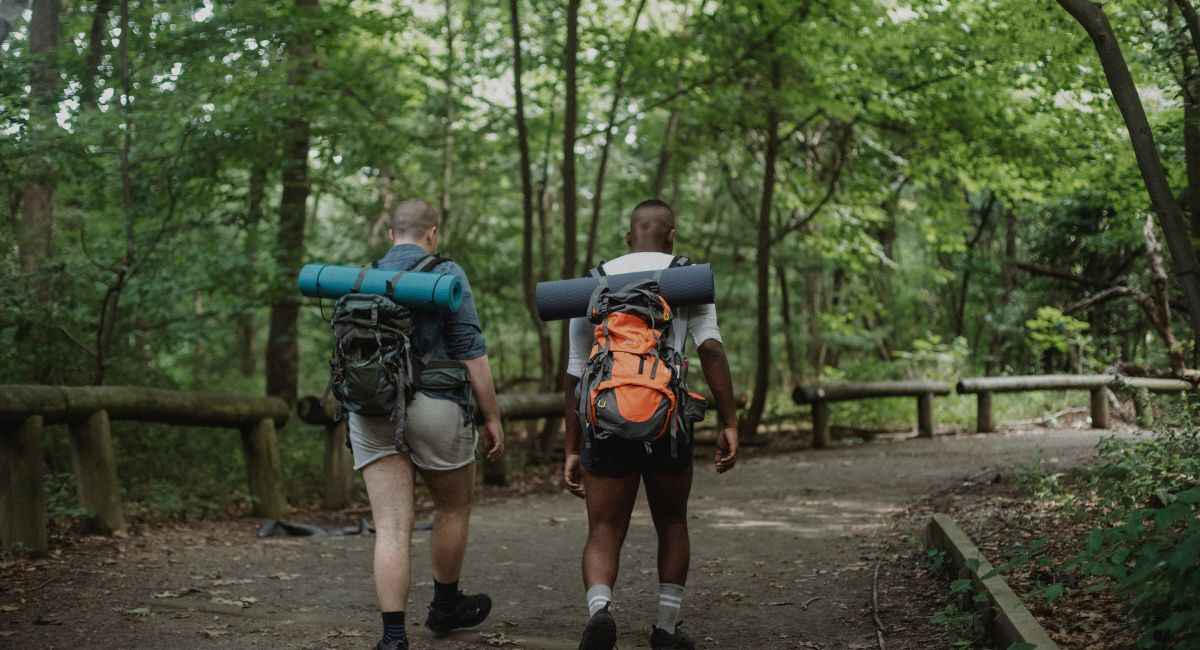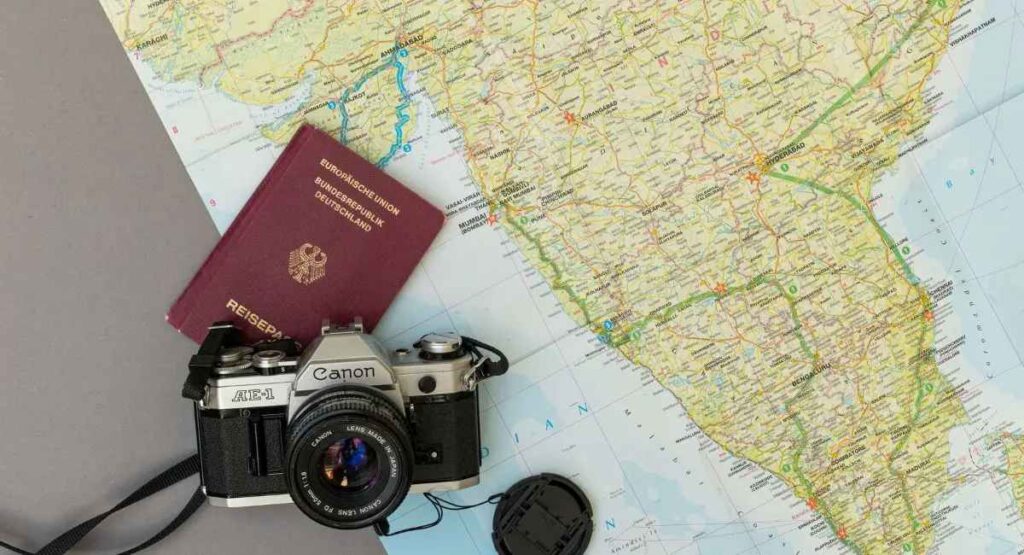Ready to hike in style and comfort? We’ve got you covered. Are you looking for tips on how to put together the ideal hiking outfit for women? This guide is here to assist you. Whether you’re a seasoned hiker or a beginner looking to explore the great outdoors, we’ll help you assemble the ideal ensemble. Say goodbye to fashion faux pas on the trail, and let’s dive into the world of chic and practical hiking attire. Now, let’s break down these elements to help you assemble the perfect hiking outfit for women.

Ready to hit the trails in style? Explore the perfect fusion of fashion and practicality with our guide to hiking outfits for women. Discover expert tips to stay chic while trekking through nature’s wonders.
Read more: Hiking for Beginners: Discover Joy of the Trails
1. Choosing the Right Footwear
Your hiking adventure starts from the ground up, quite literally. One of your most critical decisions is selecting the proper footwear. Choosing between trail shoes, hiking boots, or Skechers hiking boots can significantly impact your hiking experience.
Trail Shoes:
Trail shoes are famous for hikers, especially those tackling less challenging terrains or opting for day hikes. They are lightweight, comfortable, and offer good traction. Trail shoes like Skechers hiking boots are designed to provide adequate support and cushioning while allowing for agility and flexibility. They’re perfect for those who prefer a lighter load on their feet and enjoy a more elegant feel on the trail.
Hiking Boots:
On the other hand, traditional hiking boots are a go-to option for rugged terrain and longer treks. These boots provide excellent ankle support, which can be a game-changer when navigating uneven ground. Additionally, hiking boots offer enhanced protection against rocks, roots, and debris. Skechers hiking boots, in particular, combine durability with comfort, making them a reliable choice for hikers seeking both style and functionality.
Consider the terrain you’ll tackle when choosing between trail shoes, hiking boots, or Skechers hiking boots. Hiking boots may be the better choice for more challenging and varied terrain due to their robust construction. Trail shoes or Skechers hiking boots offer comfort and versatility for less demanding hikes.

Try different options and select the footwear that feels the most comfortable and supportive for your feet. Keep in mind that your choice of socks also plays a role in ensuring comfort during your hike. Properly fitting Skechers hiking boots or hiking shoes, combined with moisture-wicking and cushioned socks, will go a long way in ensuring an enjoyable hiking experience.
2. Base Layers: Foundation of Your Hiking Outfit
Base layers act as your second skin. Opt for moisture-wicking and breathable materials that help regulate your body temperature. They’re essential in both hot and cold weather.
3. The Art of Layering
Layering is the key to adapting to changing weather conditions. Learn how to combine base layers, insulating layers, and outerwear to stay comfortable throughout your hike.
4. Tops: Stay Cool and Protected
Choose tops that provide sun protection and ventilation. Sunburns and overheating can quickly ruin your hike. Look for long-sleeve options with built-in UPF (Ultraviolet Protection Factor).
5. Bottoms: Comfort and Durability
Comfortable and durable hiking pants or shorts are a must. Ensure they allow for a wide range of motion and have pockets for your essentials.
6. Outerwear: Versatile and Weather-Resistant
Be prepared for unpredictable weather with a versatile outer layer. Lightweight, waterproof jackets are excellent for staying dry and warm when needed.
7. Accessories: Hats, Gloves, and Sunglasses
Protect your head, hands, and eyes from the elements. A wide-brimmed hat, gloves, and UV-blocking sunglasses are essential for any hiker.
8. Backpacks: Carry Your Essentials Comfortably
Invest in a backpack that fits you well and has compartments for organization. To prevent strain on your back, evenly distribute the weight.
9. Don’t Forget the Socks
Quality hiking socks can make or break your experience. Look for moisture-wicking, cushioned socks that reduce friction and prevent blisters.
10. Hiking Shoes: Keeping Your Feet Happy on the Trail
The right socks deserve the right shoes. Ensure your hiking shoes fit well and provide support for long treks.
11. Staying Stylish and Safe with Hiking Fashion
Hiking fashion isn’t just about functionality; it’s about expressing your style. Learn how to combine comfort with your unique flair.

Read more: Exploring the Pacific Crest Trail: Discover the adventure
Conclusion:
Now that you’ve got the lowdown on creating the perfect hiking outfit, it’s time to hit the trails. Remember, comfort and style can coexist when it comes to hiking fashion. So explore the great outdoors, and make every step count.
FAQs:
What’s the best material for hiking base layers?
Consider materials like merino wool or synthetic fabrics like polyester when searching for base layers. These wick moisture away from your skin, keeping you dry and comfortable.
How do I choose the proper hiking boots?
When choosing hiking boots, consider the terrain you’ll be tackling. Opt for waterproof boots for wet conditions and sturdy ankle support for rocky trails.
Can I wear regular sunglasses for hiking?
Regular sunglasses may not provide adequate UV protection. Investing in sunglasses with UV-blocking lenses designed for outdoor activities is best.
What’s the difference between hiking pants and hiking shorts?
Hiking pants offer better protection against bugs and vegetation, making them ideal for dense forests. Hiking shorts are more comfortable in hot weather and for less challenging terrains.
How do I prevent blisters while hiking?
To prevent blisters, ensure your socks fit well, keep your feet dry, and break in your hiking shoes before embarking on a long hike. Consider using blister prevention products like moleskin as well.
Certainly! Here are some FAQs (Frequently Asked Questions) for the “Stylish and Functional Hiking Outfits for Women” blog:
What are the must-have accessories for a hiking outfit?
Regarding hiking accessories, consider investing in a wide-brimmed hat to protect yourself from the sun, durable gloves for handling rough terrain and staying warm, and UV-blocking sunglasses to shield your eyes from harmful rays.
Can I wear makeup while hiking, or will it run due to sweat?
While wearing makeup is a personal choice, keeping it minimal if you wear any is essential. Opt for lightweight and sweat-resistant products to avoid smudging or running during your hike.
How do I choose the right hiking backpack size?
Selecting the right backpack size depends on the duration of your hike and the items you need to carry. A smaller backpack of around 20-30 litres for day hikes should suffice, while longer treks require a larger pack.
What’s the best way to clean and maintain hiking gear?
Proper maintenance of your hiking gear is crucial for its longevity. Properly cleaning and storing your gear according to the manufacturer’s instructions is crucial. It is best to rinse off dirt, air dry, and store it in a cool and dry place to prevent mould and mildew.
Are there specific clothing considerations for different types of hiking terrain?
Yes, the terrain you plan to hike on can influence your clothing choices. For example, you’ll need insulated and waterproof gear for hiking in cold, snowy conditions. In contrast, hot and dry environments require breathable and sun-protective clothing.
How can I prevent overheating during a hike in warm weather?
Wear moisture-wicking base layers to avoid overheating, choose lightweight and breathable fabrics, and take regular breaks in shaded areas. Staying hydrated is also crucial to regulate your body temperature.
What should I do if I encounter unexpected weather changes during a hike?
It is essential to stay prepared for unpredictable weather. Carry versatile outerwear that can handle rain or wind, and watch the forecast before setting out. If conditions worsen, consider turning back to safety.
Should I use regular cotton socks for hiking or invest in specialized ones?
While regular cotton socks are acceptable for short and easy hikes, they tend to retain moisture, which can lead to blisters during longer treks. Investing in moisture-wicking and cushioned hiking socks is advisable for more comfortable and blister-free journeys.
Are there specific clothing considerations for hiking at high altitudes?
Hiking at high altitudes can expose you to harsh weather conditions and lower temperatures. Make sure to layer appropriately, including insulating layers, and carry additional warm clothing like down jackets or fleece.
Is it essential to wear a specific type of underwear for hiking?
Choosing moisture-wicking and breathable underwear is essential for hiking comfort. Avoid cotton underwear, as it can retain moisture and lead to chafing. Look for specialized hiking underwear designed to keep you dry and comfortable.
By following this guide, you’ll be well-prepared to embrace the great outdoors with confidence and style. Happy hiking!

